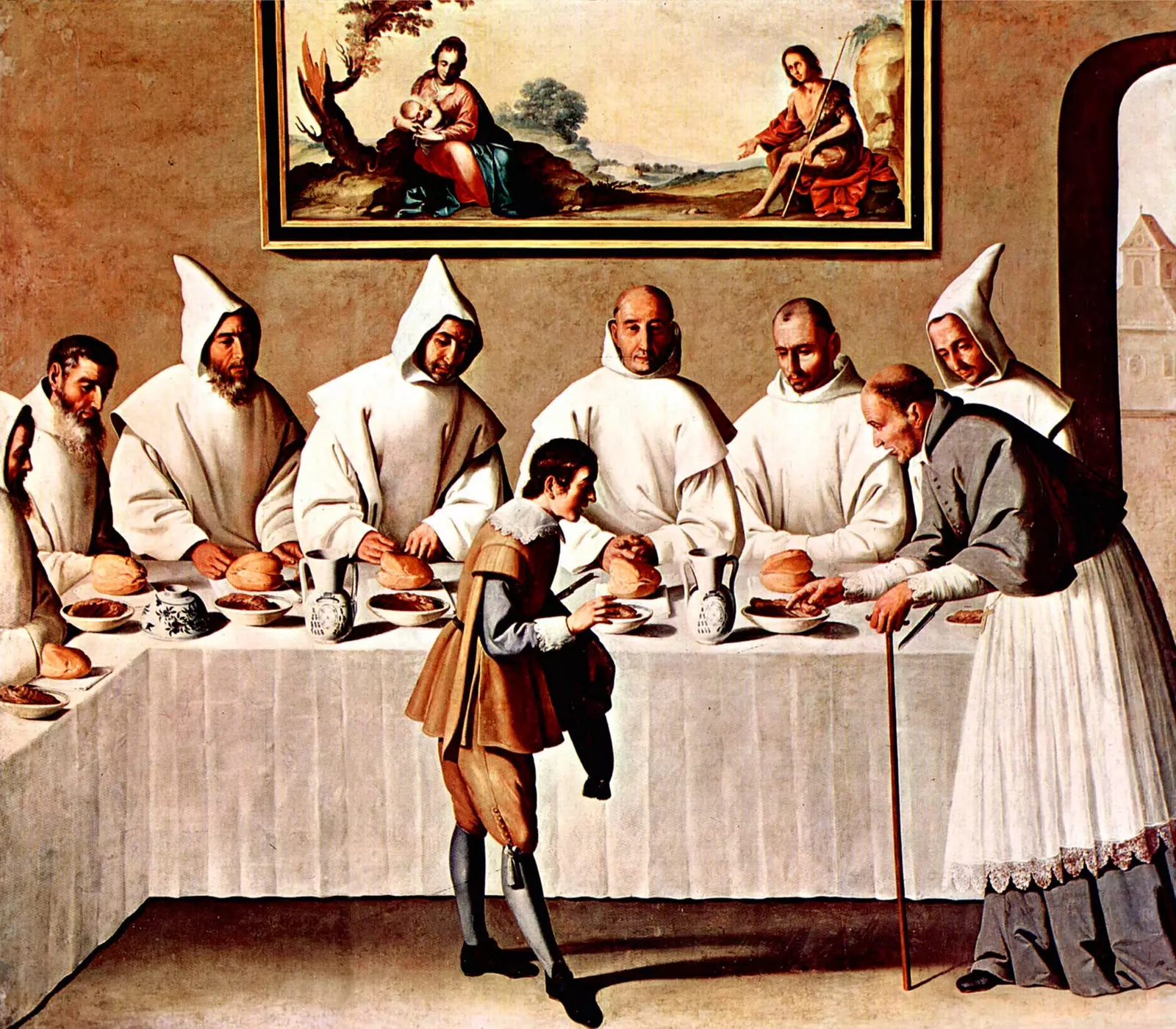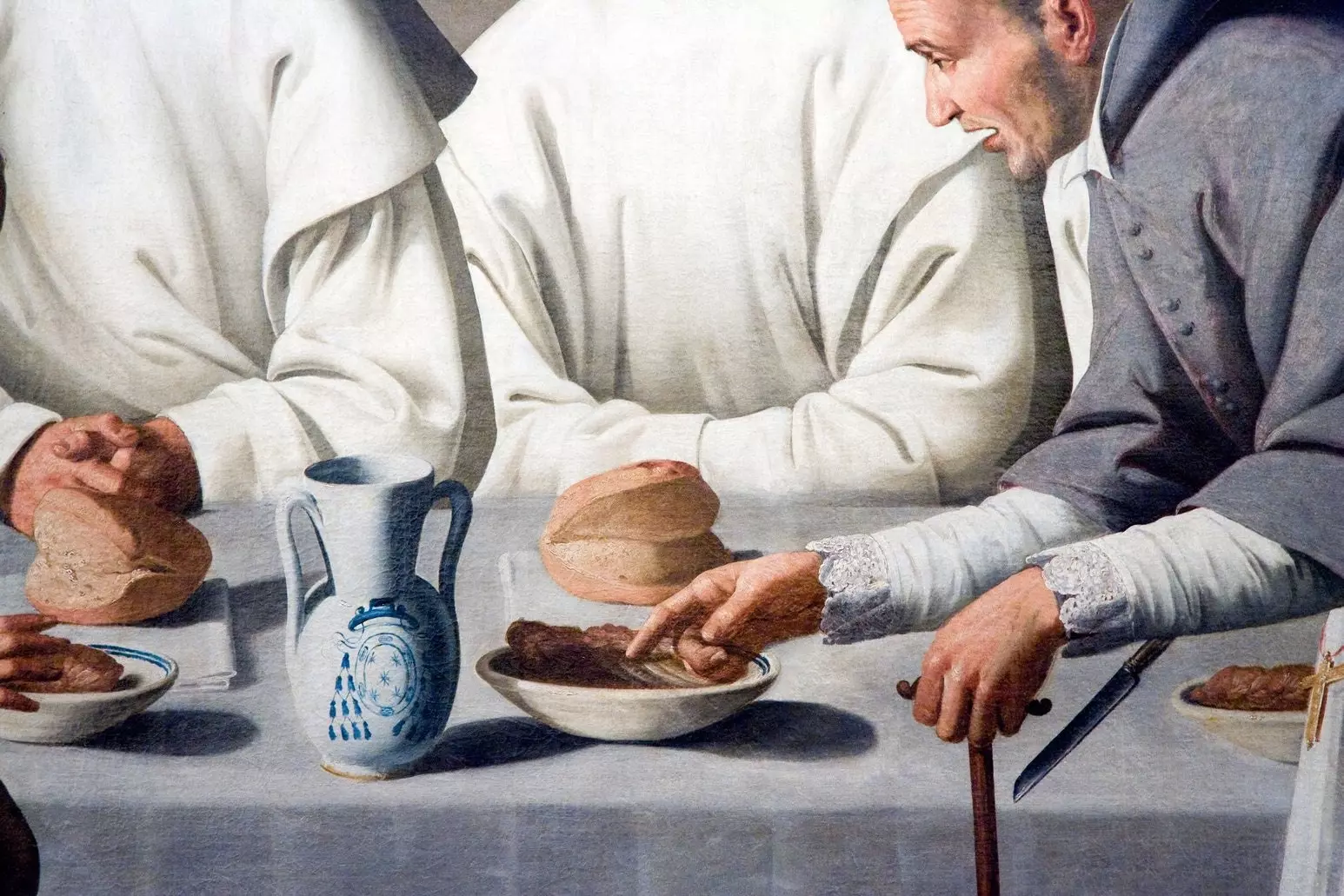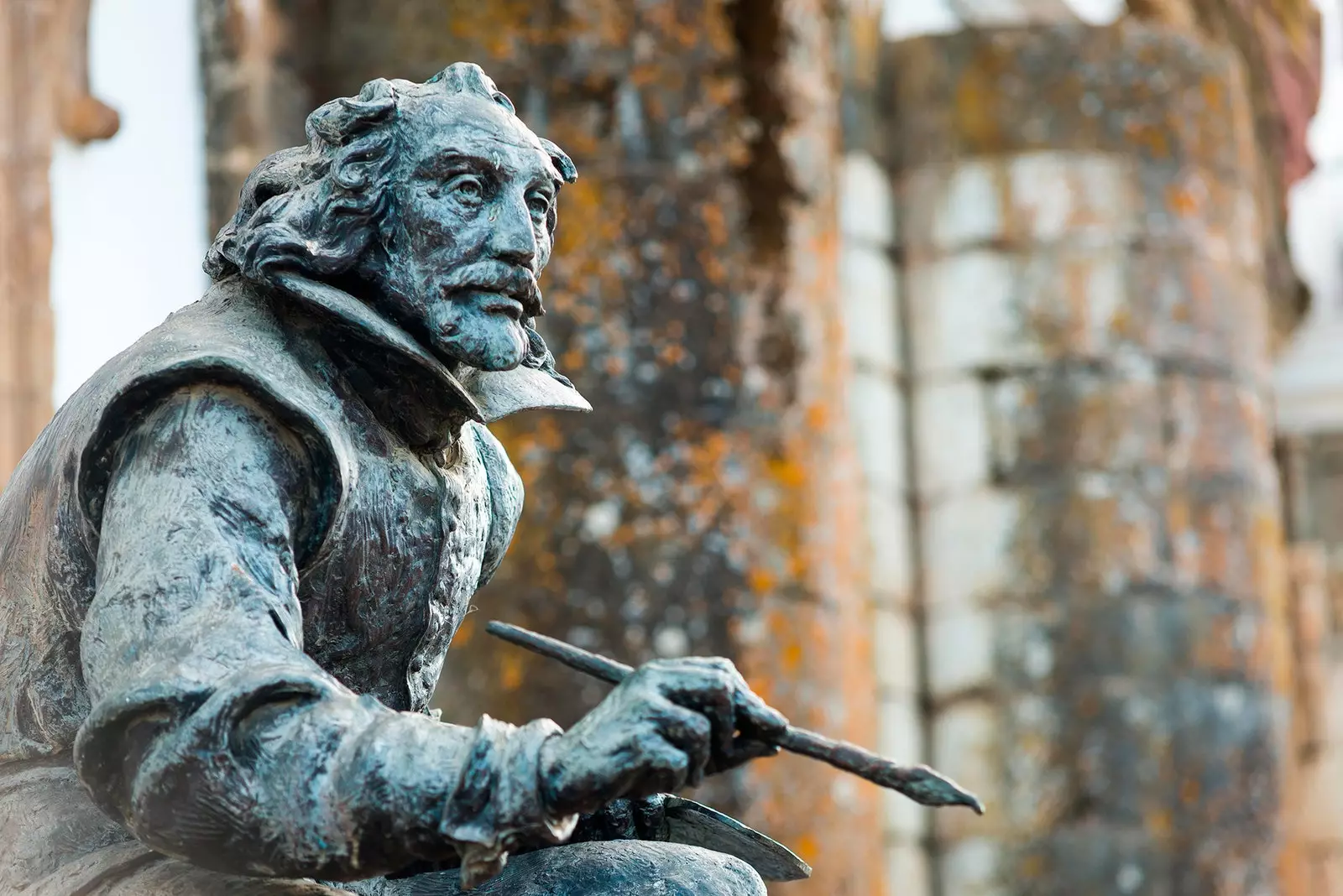
'San Hugo in the Refectory of the Carthusians', by Francisco de Zurbarán
Many will fantasize these days with the idea of falling into a peaceful and deep sleep and not wake up until all "this" is over . Anyway, we have good news, especially for believers: if it happened to Saint Bruno and his companions about a thousand years ago, why not you?
Bruno of Cologne he was the founder of the Order of the Carthusians , dedicated since 1084 to contemplation and prayer. He settled with the first six followers of his in the French city of Grenoble, whose bishop, Saint Hugh, was to be his benefactor. In addition to giving them land in the chartreuse mountains to erect his mother-house, he provided them with food, for the spirit is not the only thing a man needs to nurture, no matter how Carthusian he may be.
On one occasion, on the verge of Lent, the bishop sent them meat , which, as is well known, should not be consumed during the forty days of purification between Ash Wednesday and Good Friday. The monks found themselves between a rock and a hard place : should they accept the gift of their protector, or respect the eternal and unappealable rules that the divinity has dictated in person (that is to say)? They had so many doubts and so much need to put them in common that between dimes and diretes they fell asleep in the refectory and with the table set.
Forty-five days later, the bishop, somewhat shaken by the lack of news from the convent, sent an emissary. The scene that the boy found was not to be missed: the Carthusians were still there,** immersed in a deep sleep and with untouched food before them**. when he showed up Saint Hugh to see the portent with their own eyes, the protégés of him woke up and, touching her, the meat immediately turned to ashes . That's how they all learned that God always has the last word , and that Lent is respected so I give you the San Hugo meat or the Sursum Corda.

Detail of 'San Hugo in the refectory of the Carthusians', by Francisco de Zurbarán
This painting was commissioned by the Carthusians of another era -the 17th century-, but what is striking about it is that more it seems painted in the times in which the miracle happened . And it must be said that Zurbarán was, in reality, a medieval artist enclosed in a baroque body . Because of his obsession with symmetry, because of the rigidity of his compositions, because of the stillness of his characters and his highly sophisticated sense of spirituality, all of which are present here as never before.
Such features of style are not that they were out of fashion in his time, for when we say that we always mean a fashion that has just been superseded by another. And really his was a world that had ended about a century and a half before he got down to business. As much as it is considered a dark , and that is usually related to the lighting innovations of a Caravaggio.
To understand us, Zurbarán was closer to Van Eyck than Michelangelo . That is why when he was commissioned to paint the labors of Hercules, his hero possesses the tension and fierceness of a frozen whiting, and that is why what the “Defense of Cádiz against the English” represents is more like the plot of a wallpaper than a real battle. naval.
However, oh, Zurbarán's still lifes. The monks of Zurbarán. The saints of Zurbarán. Zurbarán's fabrics. The light of Zurbarán! All this is a miracle as extraordinary as the one that submerges some Carthusians in a sleep of a month and a half and turns stewed meat into ashes. Not to leave the realm of art, there is in only one of the earthenware bowls in this painting more sense of wonder than in all of Tiepolo. And you don't have to be a Carthusian to realize it.
You will find 'San Hugo in the refectory of the Carthusians' (1655), by Francisco de Zurbarán, in the Museum of Fine Arts in Seville.

Statue of Francisco de Zurbarán in Llerena, Extremadura
